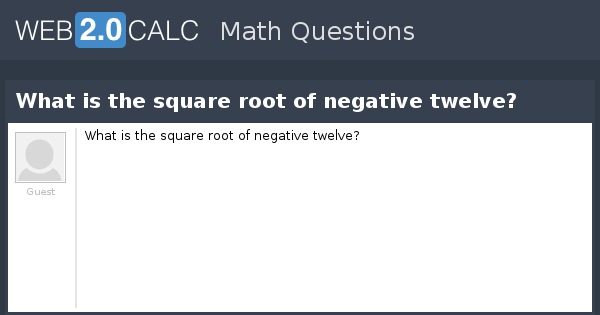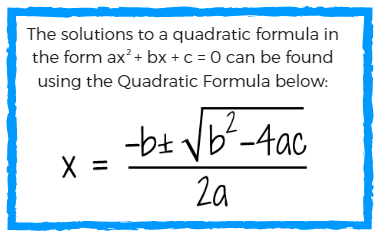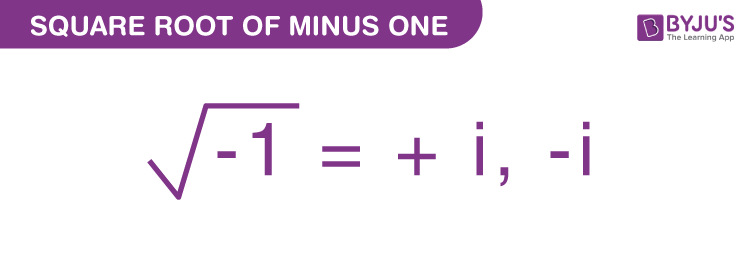Topic derivative of square root of 1-x: The derivative of the square root of 1-x is a fundamental concept in calculus, involving the application of the chain rule. This article will walk you through the detailed process of differentiating this function, providing step-by-step explanations and practical examples to enhance your understanding and mastery of this essential calculus technique.
Table of Content
- Derivative of the Square Root Function \( \sqrt{1 - x} \)
- Introduction to Derivatives
- Basic Differentiation Rules
- Chain Rule in Differentiation
- Finding the Derivative of √(1-x) Using the Chain Rule
- Step-by-Step Differentiation of √(1-x)
- Using First Principles to Differentiate √(1-x)
- Worked Examples and Practice Problems
- Applications of the Derivative of √(1-x)
- Visualizing the Derivative of √(1-x)
- Common Mistakes and How to Avoid Them
- Advanced Techniques for Differentiating Complex Functions
- Conclusion
- YOUTUBE:
Derivative of the Square Root Function \( \sqrt{1 - x} \)
The derivative of the square root function \( f(x) = \sqrt{1 - x} \) can be found using the chain rule and power rule. Here is the detailed process:
Step-by-Step Calculation
- Rewrite the square root function in exponential form:
\( f(x) = \sqrt{1 - x} = (1 - x)^{1/2} \)
- Apply the power rule:
\( \frac{d}{dx} [u^n] = n \cdot u^{n-1} \cdot \frac{du}{dx} \)
Here, \( u = 1 - x \) and \( n = \frac{1}{2} \).
- Differentiate using the chain rule:
\( \frac{d}{dx} [(1 - x)^{1/2}] = \frac{1}{2} (1 - x)^{-1/2} \cdot (-1) \)
- Simplify the expression:
\( \frac{d}{dx} [\sqrt{1 - x}] = -\frac{1}{2} (1 - x)^{-1/2} \)
\( \frac{d}{dx} [\sqrt{1 - x}] = -\frac{1}{2 \sqrt{1 - x}} \)
Final Result
Therefore, the derivative of the square root function \( f(x) = \sqrt{1 - x} \) is:
\[ f'(x) = -\frac{1}{2 \sqrt{1 - x}} \]

READ MORE:
Introduction to Derivatives
In calculus, the concept of a derivative represents the rate at which a function is changing at any given point.
Derivatives are fundamental to understanding the behavior of functions and are used extensively in various fields
such as physics, engineering, and economics.
The derivative of a function f(x) at a point x is defined as the limit of the average rate of change of
the function over an interval as the interval approaches zero. Mathematically, the derivative of f(x) is
denoted by f'(x) or \(\frac{df}{dx}\).
The formal definition of the derivative is given by the limit:
\[
f'(x) = \lim_{{h \to 0}} \frac{f(x + h) - f(x)}{h}
\]
This formula represents the slope of the tangent line to the curve of the function f(x) at the point x.
Understanding the derivative involves several key concepts and rules, including:
- Basic Differentiation Rules: These rules provide the foundation for differentiating simple functions, such as the power rule, product rule, quotient rule, and chain rule.
- Chain Rule: This rule is essential for differentiating composite functions and will be particularly useful in finding the derivative of more complex expressions.
- First Principles: Also known as the definition of the derivative, first principles provide a fundamental approach to understanding and calculating derivatives from basic principles.
By mastering these concepts and rules, you will be equipped to differentiate a wide range of functions, including
more complex ones like the square root of \(1-x\). In the following sections, we will delve deeper into these
topics and apply them to find the derivative of \(\sqrt{1-x}\).
Basic Differentiation Rules
Differentiation is a fundamental concept in calculus, and understanding the basic rules is essential for finding the derivatives of various functions. Here are the primary rules of differentiation:
- Power Rule: For any real number \( n \), the derivative of \( x^n \) is given by: \[ \frac{d}{dx} x^n = n x^{n-1} \]
- Constant Rule: The derivative of a constant \( c \) is 0: \[ \frac{d}{dx} c = 0
- Constant Multiple Rule: The derivative of a constant multiplied by a function is the constant multiplied by the derivative of the function: \[ \frac{d}{dx} [c f(x)] = c \frac{d}{dx} f(x) \]
- Sum Rule: The derivative of a sum of functions is the sum of their derivatives: \[ \frac{d}{dx} [f(x) + g(x)] = \frac{d}{dx} f(x) + \frac{d}{dx} g(x)
- Difference Rule: The derivative of a difference of functions is the difference of their derivatives: \[ \frac{d}{dx} [f(x) - g(x)] = \frac{d}{dx} f(x) - \frac{d}{dx} g(x) \]
- Product Rule: For two differentiable functions \( f \) and \( g \), the derivative of their product is: \[ \frac{d}{dx} [f(x) \cdot g(x)] = f(x) \frac{d}{dx} g(x) + g(x) \frac{d}{dx} f(x) \]
- Quotient Rule: For two differentiable functions \( f \) and \( g \), the derivative of their quotient is: \[ \frac{d}{dx} \left[ \frac{f(x)}{g(x)} \right] = \frac{g(x) \frac{d}{dx} f(x) - f(x) \frac{d}{dx} g(x)}{[g(x)]^2} \]
- Chain Rule: For composite functions \( f(g(x)) \), the derivative is: \[ \frac{d}{dx} f(g(x)) = f'(g(x)) \cdot g'(x) \]
These rules are the foundation for differentiating more complex functions. By combining these rules, we can tackle derivatives of functions such as the square root of \(1 - x\).
Chain Rule in Differentiation
The chain rule is a fundamental technique in calculus used to find the derivative of composite functions. A composite function is a function that is formed by combining two or more functions. The chain rule allows us to differentiate these complex functions by breaking them down into their simpler components.
To understand the chain rule, let's consider a function \(y = f(g(x))\), where \(y\) is a function of \(u = g(x)\), and \(u\) is a function of \(x\). The chain rule states that the derivative of \(y\) with respect to \(x\) is given by:
\[ \frac{dy}{dx} = \frac{dy}{du} \cdot \frac{du}{dx} \]
In this formula:
- \( \frac{dy}{dx} \) is the derivative of \(y\) with respect to \(x\).
- \( \frac{dy}{du} \) is the derivative of \(y\) with respect to \(u\).
- \( \frac{du}{dx} \) is the derivative of \(u\) with respect to \(x\).
This means that to differentiate \(f(g(x))\), we first differentiate \(f(u)\) with respect to \(u\), and then multiply by the derivative of \(u = g(x)\) with respect to \(x\).
Let's apply the chain rule to find the derivative of \( \sqrt{1 - x} \):
- Identify the outer function and the inner function.
- Outer function: \( f(u) = \sqrt{u} \)
- Inner function: \( u = 1 - x \)
- Differentiate the outer function with respect to \(u\):
- \( \frac{d}{du} \sqrt{u} = \frac{1}{2\sqrt{u}} \)
- Differentiate the inner function with respect to \(x\):
- \( \frac{d}{dx} (1 - x) = -1 \)
- Apply the chain rule:
- \( \frac{d}{dx} \sqrt{1 - x} = \frac{d}{du} \sqrt{u} \cdot \frac{d}{dx} (1 - x) = \frac{1}{2\sqrt{1 - x}} \cdot (-1) = -\frac{1}{2\sqrt{1 - x}} \)
Therefore, the derivative of \( \sqrt{1 - x} \) is \( -\frac{1}{2\sqrt{1 - x}} \). The chain rule allows us to systematically find this derivative by differentiating the outer and inner functions separately and then combining the results.
The chain rule can be extended to more complex composite functions. For example, if we have a function with three layers, such as \(y = f(g(h(x)))\), the chain rule would be applied as follows:
\[ \frac{dy}{dx} = \frac{dy}{dg} \cdot \frac{dg}{dh} \cdot \frac{dh}{dx} \]
This shows that the derivative of a composite function is the product of the derivatives of the individual functions.
Understanding and applying the chain rule is essential for differentiating a wide variety of functions in calculus, making it a crucial tool for solving complex mathematical problems.
Finding the Derivative of √(1-x) Using the Chain Rule
The Chain Rule is a fundamental tool in calculus used to differentiate composite functions. When dealing with a function such as \( \sqrt{1-x} \), we recognize that it is a composite function consisting of an outer function and an inner function. Let's break down the steps to differentiate \( \sqrt{1-x} \) using the Chain Rule.
-
Identify the Outer and Inner Functions:
- The outer function is \( f(u) = \sqrt{u} \) or \( f(u) = u^{1/2} \).
- The inner function is \( g(x) = 1 - x \).
-
Apply the Chain Rule: The Chain Rule states that if you have a composite function \( y = f(g(x)) \), then the derivative \( y' \) is given by:
-
Differentiate the Outer Function:
The derivative of the outer function \( f(u) = u^{1/2} \) is:
or \( \frac{1}{2} u^{-1/2} \).
-
Differentiate the Inner Function:
The derivative of the inner function \( g(x) = 1 - x \) is:
-
Combine Using the Chain Rule:
Substitute the derivatives into the Chain Rule formula:
Simplify the expression:
Thus, the derivative of \( \sqrt{1-x} \) is \( \frac{-1}{2\sqrt{1-x}} \).
Step-by-Step Differentiation of √(1-x)
The process of differentiating the function \( \sqrt{1-x} \) involves applying the chain rule. Let's go through the steps in detail:
-
Identify the outer and inner functions:
- Outer function: \( f(u) = \sqrt{u} = u^{1/2} \)
- Inner function: \( g(x) = 1-x \)
-
Differentiate the outer function \( f(u) \) with respect to \( u \):
\[ \frac{d}{du} u^{1/2} = \frac{1}{2} u^{-1/2} = \frac{1}{2\sqrt{u}} \]
-
Differentiate the inner function \( g(x) \) with respect to \( x \):
\[ \frac{d}{dx} (1-x) = -1 \]
-
Apply the chain rule, which states:
\[ \frac{dy}{dx} = \frac{dy}{du} \cdot \frac{du}{dx} \]
Substitute \( u = 1-x \) and the derivatives found:
\[ \frac{d}{dx} \sqrt{1-x} = \frac{d}{du} \sqrt{u} \cdot \frac{d}{dx} (1-x) = \frac{1}{2\sqrt{1-x}} \cdot (-1) \]
-
Simplify the expression:
\[ \frac{d}{dx} \sqrt{1-x} = -\frac{1}{2\sqrt{1-x}} \]
Thus, the derivative of \( \sqrt{1-x} \) is \( -\frac{1}{2\sqrt{1-x}} \).
Using First Principles to Differentiate √(1-x)
To find the derivative of \( \sqrt{1-x} \) using first principles, we start with the definition of the derivative:
\[ f'(x) = \lim_{{h \to 0}} \frac{f(x+h) - f(x)}{h} \]
For \( f(x) = \sqrt{1-x} \), we need to compute \( f(x+h) \):
\[ f(x+h) = \sqrt{1-(x+h)} = \sqrt{1-x-h} \]
Substitute \( f(x+h) \) and \( f(x) \) into the definition of the derivative:
\[ f'(x) = \lim_{{h \to 0}} \frac{\sqrt{1-x-h} - \sqrt{1-x}}{h} \]
To simplify the expression, multiply the numerator and the denominator by the conjugate of the numerator:
\[ f'(x) = \lim_{{h \to 0}} \frac{(\sqrt{1-x-h} - \sqrt{1-x})(\sqrt{1-x-h} + \sqrt{1-x})}{h(\sqrt{1-x-h} + \sqrt{1-x})} \]
This simplifies to:
\[ f'(x) = \lim_{{h \to 0}} \frac{(1-x-h) - (1-x)}{h(\sqrt{1-x-h} + \sqrt{1-x})} \]
\[ f'(x) = \lim_{{h \to 0}} \frac{-h}{h(\sqrt{1-x-h} + \sqrt{1-x})} \]
\[ f'(x) = \lim_{{h \to 0}} \frac{-1}{\sqrt{1-x-h} + \sqrt{1-x}} \]
As \( h \) approaches 0, \( \sqrt{1-x-h} \) approaches \( \sqrt{1-x} \). Therefore, we get:
\[ f'(x) = \frac{-1}{2\sqrt{1-x}} \]
Thus, the derivative of \( \sqrt{1-x} \) using first principles is:
\[ f'(x) = -\frac{1}{2\sqrt{1-x}} \]
Worked Examples and Practice Problems
In this section, we will explore several worked examples and practice problems to understand how to differentiate the function \(\sqrt{1-x}\). These examples will illustrate the application of various differentiation techniques, including the chain rule.
Example 1: Basic Differentiation
Differentiate the function \( f(x) = \sqrt{1-x} \).
- Rewrite the function in exponent form: \( f(x) = (1-x)^{1/2} \).
- Apply the chain rule: \( f'(x) = \frac{1}{2}(1-x)^{-1/2} \cdot (-1) \).
- Simplify the expression: \( f'(x) = -\frac{1}{2}(1-x)^{-1/2} = -\frac{1}{2\sqrt{1-x}} \).
Thus, the derivative of \( \sqrt{1-x} \) is \( -\frac{1}{2\sqrt{1-x}} \).
Example 2: Practice Problem
Differentiate the function \( f(x) = \sqrt{4-2x} \).
- Rewrite the function in exponent form: \( f(x) = (4-2x)^{1/2} \).
- Apply the chain rule: \( f'(x) = \frac{1}{2}(4-2x)^{-1/2} \cdot (-2) \).
- Simplify the expression: \( f'(x) = -\frac{1}{2}(4-2x)^{-1/2} \cdot 2 = -\frac{1}{\sqrt{4-2x}} \).
Thus, the derivative of \( \sqrt{4-2x} \) is \( -\frac{1}{\sqrt{4-2x}} \).
Example 3: Differentiation with Product Rule
Differentiate the function \( f(x) = x \cdot \sqrt{1-x} \).
- Identify the two functions: \( u = x \) and \( v = \sqrt{1-x} \).
- Find the derivatives: \( u' = 1 \) and \( v' = -\frac{1}{2\sqrt{1-x}} \).
- Apply the product rule: \( f'(x) = u'v + uv' \).
- Substitute the values: \( f'(x) = 1 \cdot \sqrt{1-x} + x \cdot \left(-\frac{1}{2\sqrt{1-x}}\right) \).
- Simplify the expression: \( f'(x) = \sqrt{1-x} - \frac{x}{2\sqrt{1-x}} \).
Thus, the derivative of \( x \cdot \sqrt{1-x} \) is \( \sqrt{1-x} - \frac{x}{2\sqrt{1-x}} \).
Practice Problems
- Differentiate \( f(x) = \sqrt{9-3x} \).
- Differentiate \( f(x) = (2x-5) \cdot \sqrt{1-x^2} \).
- Differentiate \( f(x) = \sqrt{7-4x} + x^2 \).
- Find the derivative of \( f(x) = \frac{\sqrt{1-x}}{x} \).
Attempt these practice problems to solidify your understanding of differentiation techniques involving the function \(\sqrt{1-x}\).
Applications of the Derivative of √(1-x)
The derivative of \( \sqrt{1-x} \), which is given by \( \frac{-1}{2\sqrt{1-x}} \), has various applications in different fields. Understanding these applications helps in grasping the practical importance of differentiation. Here are some notable applications:
-
Physics:
In physics, this derivative is useful in kinematic equations where the displacement might involve a square root function. For example, in motion under gravity where the height at a given time could be modeled by such a function, the derivative helps determine the velocity and acceleration.
-
Engineering:
In engineering, especially in fields involving material stress and strain calculations, derivatives of such functions can help determine the rate of change of strain with respect to stress, which is critical for understanding material behavior under various load conditions.
-
Economics:
In economics, derivatives like this can be used to model and predict changes in cost functions where cost might decrease non-linearly as a function of production rate or other variables. The derivative provides insights into marginal costs and optimal production levels.
-
Biology:
In biology, particularly in population dynamics, the growth of a population might follow a model that includes square root functions. The derivative helps in understanding the rate of change of the population over time.
-
Computer Graphics:
In computer graphics, derivatives are crucial for rendering curves and surfaces. The derivative of \( \sqrt{1-x} \) helps in shading and texture mapping by providing gradients that simulate light reflections and surface textures more realistically.
Overall, the derivative of \( \sqrt{1-x} \) plays a significant role in numerous scientific, engineering, and mathematical contexts, providing critical insights into the behavior and properties of various systems and models.

Visualizing the Derivative of √(1-x)
Understanding the derivative of the function \( \sqrt{1-x} \) can be greatly enhanced through visualization. This helps in grasping the changes in the slope and the behavior of the function as \( x \) varies.
Graphical Representation
Using tools like Desmos, we can plot the function \( f(x) = \sqrt{1-x} \) along with its derivative. The function \( f(x) \) is a curve that decreases as \( x \) increases, and its derivative shows the rate of change of this function.
- Original function: \( f(x) = \sqrt{1-x} \)
- Derivative: \( f'(x) = \frac{-1}{2\sqrt{1-x}} \)
Steps to Visualize Using a Graphing Calculator
- Open a graphing tool such as .
- Input the original function \( \sqrt{1-x} \) in the function box.
- In a new function box, input the derivative \( \frac{-1}{2\sqrt{1-x}} \).
- Observe how the slope of the tangent to the curve changes at different points.
By plotting both the function and its derivative, you can see the following:
- At \( x = 0 \), the slope is \( -\frac{1}{2} \).
- As \( x \) approaches 1, the slope becomes steeper (more negative), indicating a rapid decrease in the function's value.
- At \( x = 1 \), the derivative is undefined, reflecting the vertical tangent at this point.
Interactive Visualization
To better understand how the derivative behaves, you can interact with the graph. Move along the \( x \)-axis and observe the slope of the tangent line, which corresponds to the value of the derivative at each point.
Applications of Visualization
- Understanding Behavior: Visualizing helps in comprehending how the function changes and where it increases or decreases most rapidly.
- Critical Points: Identifying where the function has its critical points (where the derivative is zero or undefined).
- Mathematical Intuition: Enhances intuition about the relationship between a function and its derivative.
By using these graphical techniques, one can develop a deeper understanding of the derivative of \( \sqrt{1-x} \) and its implications.
Common Mistakes and How to Avoid Them
When differentiating
Mistake 1: Ignoring the Chain Rule
One of the most frequent errors is forgetting to apply the chain rule correctly. The function
- Mistake: Differentiating as if it were a simple function:
\frac{d}{dx}[√(1-x)] = \frac{1}{2√(1-x)} - Correction: Apply the chain rule:
\frac{d}{dx}[√(1-x)] = \frac{1}{2√(1-x)} \cdot (-1) = -\frac{1}{2√(1-x)}
Mistake 2: Incorrect Application of the Chain Rule
Even when the chain rule is applied, mistakes can be made in its application.
- Mistake: Misapplying the derivative of the inner function:
\frac{d}{dx}[√(1-x)] = \frac{1}{2√(1-x)} \cdot 1 - Correction: Remember that the derivative of
1-x is-1 :\frac{d}{dx}[√(1-x)] = \frac{1}{2√(1-x)} \cdot (-1) = -\frac{1}{2√(1-x)}
Mistake 3: Simplification Errors
Errors can occur during the simplification process after applying the chain rule.
- Mistake: Incorrectly simplifying the derivative:
\frac{1}{2√(1-x)} \cdot (-1) = \frac{1}{2√(1-x)} - Correction: Ensure correct sign and simplification:
\frac{1}{2√(1-x)} \cdot (-1) = -\frac{1}{2√(1-x)}
Mistake 4: Forgetting the Negative Sign
Another common mistake is forgetting to include the negative sign that comes from the derivative of the inner function.
- Mistake: Omitting the negative sign:
\frac{d}{dx}[√(1-x)] = \frac{1}{2√(1-x)} - Correction: Always include the negative sign:
\frac{d}{dx}[√(1-x)] = -\frac{1}{2√(1-x)}
Tips to Avoid These Mistakes
- Review the chain rule thoroughly and understand its application to composite functions.
- Double-check the differentiation of the inner function before applying the chain rule.
- Practice simplifying expressions carefully and accurately.
- Always re-evaluate your steps to ensure the correct signs and factors are included.
Advanced Techniques for Differentiating Complex Functions
In this section, we will explore advanced techniques for differentiating more complex functions, focusing on the derivative of
1. Implicit Differentiation
Implicit differentiation is useful when dealing with functions that are not explicitly solved for one variable in terms of another. To apply this technique to the function
- Rewrite the function in a form that sets it equal to zero:
\(y^2 = 1-x\) . - Differentiate both sides with respect to
\(x\) , applying the chain rule where necessary:\(\frac{d}{dx}(y^2) = \frac{d}{dx}(1-x)\) . - Since
\(\frac{d}{dx}(y^2) = 2y \frac{dy}{dx}\) and\(\frac{d}{dx}(1-x) = -1\) , we get:\(2y \frac{dy}{dx} = -1\) . - Solve for
\(\frac{dy}{dx}\) :\(\frac{dy}{dx} = \frac{-1}{2y}\) . - Substitute
\(y = \sqrt{1-x}\) back into the equation:\(\frac{dy}{dx} = \frac{-1}{2\sqrt{1-x}}\) .
2. Logarithmic Differentiation
Logarithmic differentiation can simplify the process of differentiating functions by taking the natural logarithm of both sides. Here's how to use it for
- Rewrite the function using a logarithm:
\(y = (1-x)^{1/2}\) . - Take the natural logarithm of both sides:
\(\ln(y) = \frac{1}{2} \ln(1-x)\) . - Differentiate both sides with respect to
\(x\) :\(\frac{1}{y} \frac{dy}{dx} = \frac{1}{2} \cdot \frac{-1}{1-x}\) . - Simplify and solve for
\(\frac{dy}{dx}\) :\(\frac{dy}{dx} = y \cdot \frac{-1}{2(1-x)} = \sqrt{1-x} \cdot \frac{-1}{2(1-x)}\) . - Since
\(y = \sqrt{1-x}\) , the derivative is:\(\frac{dy}{dx} = \frac{-1}{2\sqrt{1-x}}\) .
3. Differentiation Using Substitution
Substitution is another powerful technique for handling complex functions. To differentiate
- Let
\(u = 1-x\) , so the function becomes\(y = \sqrt{u}\) . - Differentiate
\(u\) with respect to \(x\): \(\frac{du}{dx} = -1\). - Differentiate
\(y\) with respect to \(u\): \(\frac{dy}{du} = \frac{1}{2\sqrt{u}}\). - Apply the chain rule to find \(\frac{dy}{dx}\):
\(\frac{dy}{dx} = \frac{dy}{du} \cdot \frac{du}{dx} = \frac{1}{2\sqrt{u}} \cdot (-1) = \frac{-1}{2\sqrt{u}}\) . - Substitute back
\(u = 1-x\): \(\frac{dy}{dx} = \frac{-1}{2\sqrt{1-x}}\) .
By mastering these advanced techniques, you will be well-equipped to handle the differentiation of a wide range of complex functions beyond the scope of basic rules.
Conclusion
In conclusion, the process of finding the derivative of the square root of \(1-x\) exemplifies several key concepts in calculus, including the application of the chain rule and the fundamental understanding of differentiation techniques. By breaking down the function \(\sqrt{1-x}\) and applying differentiation rules step-by-step, we have demonstrated how to handle complex functions effectively.
The derivative of \(\sqrt{1-x}\) was found to be:
\[
\frac{d}{dx} \sqrt{1-x} = \frac{-1}{2\sqrt{1-x}}
\]
This result is derived through the chain rule, which involves taking the derivative of the outer function and then multiplying it by the derivative of the inner function. This approach is not only applicable to this specific function but also provides a framework for differentiating a wide variety of more complex functions.
Moreover, understanding the derivative of \(\sqrt{1-x}\) has practical applications in various fields such as physics, engineering, and economics where rates of change and slopes of curves are analyzed. Visualizing the derivative helps in comprehending how the function behaves and changes, providing deeper insights into its properties and applications.
Advanced techniques, such as implicit differentiation and using higher-order derivatives, further extend the ability to work with even more intricate functions. For instance, implicit differentiation can be employed when functions are defined implicitly rather than explicitly, offering a powerful tool for tackling challenging problems.
In essence, mastering the differentiation of functions like \(\sqrt{1-x}\) equips us with the skills to handle a broad spectrum of mathematical and real-world problems, reinforcing the importance and utility of calculus in scientific and practical endeavors.

Tìm Đạo Hàm của sqrt(1 - x^2)
